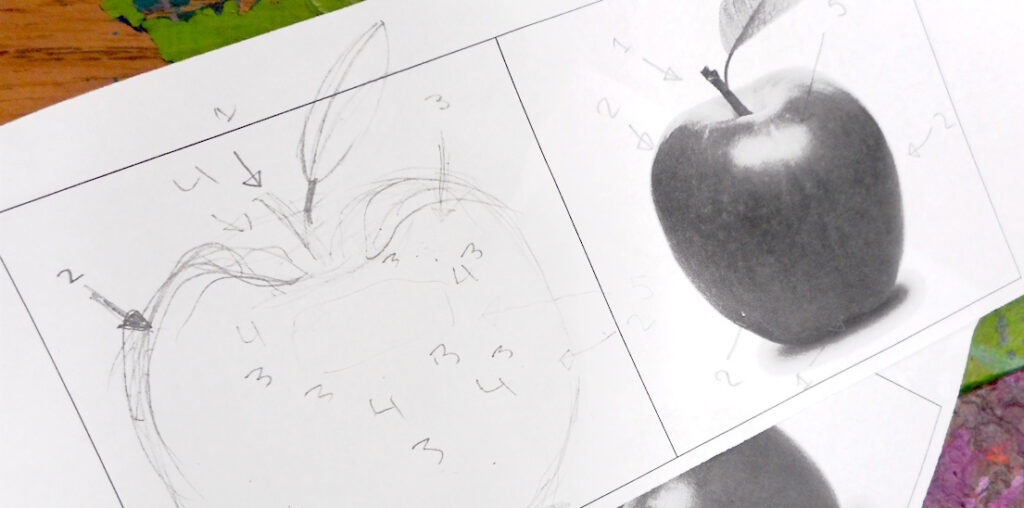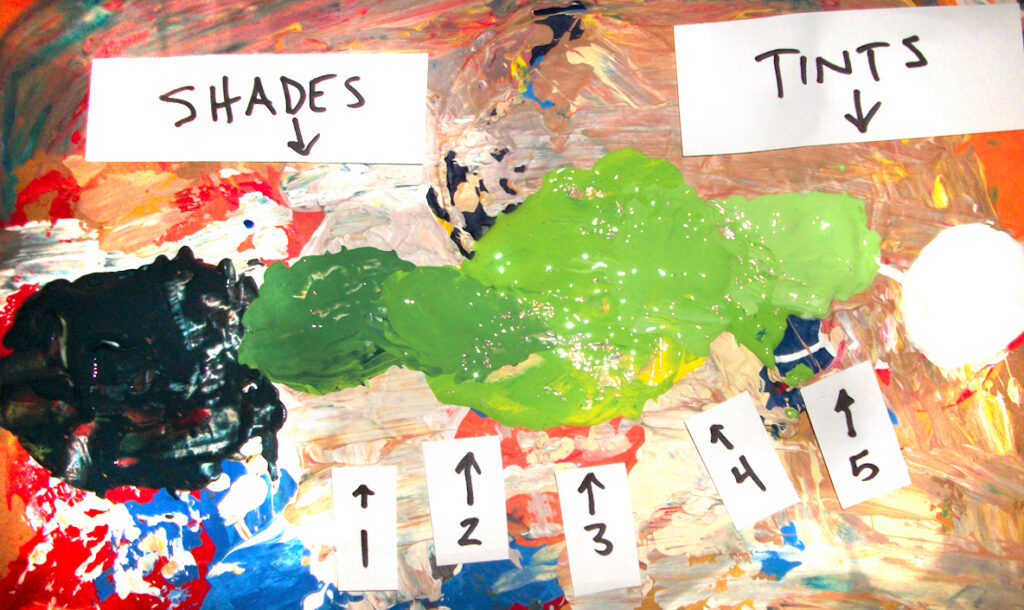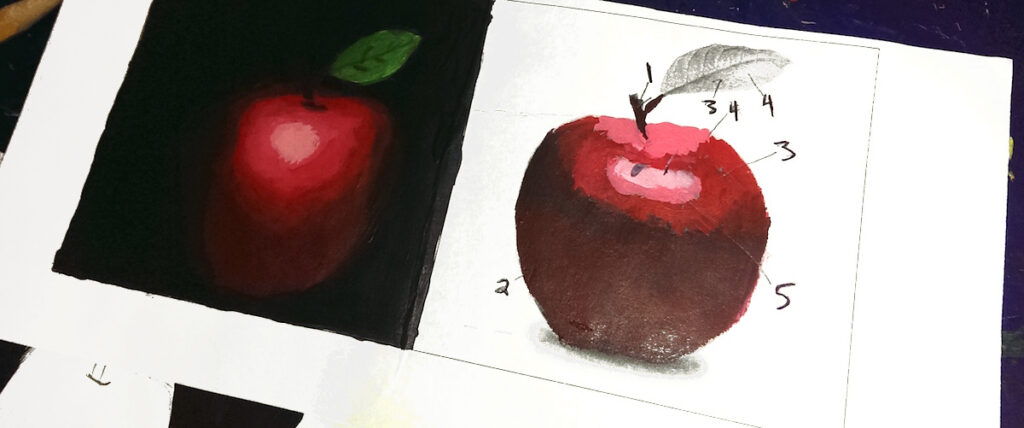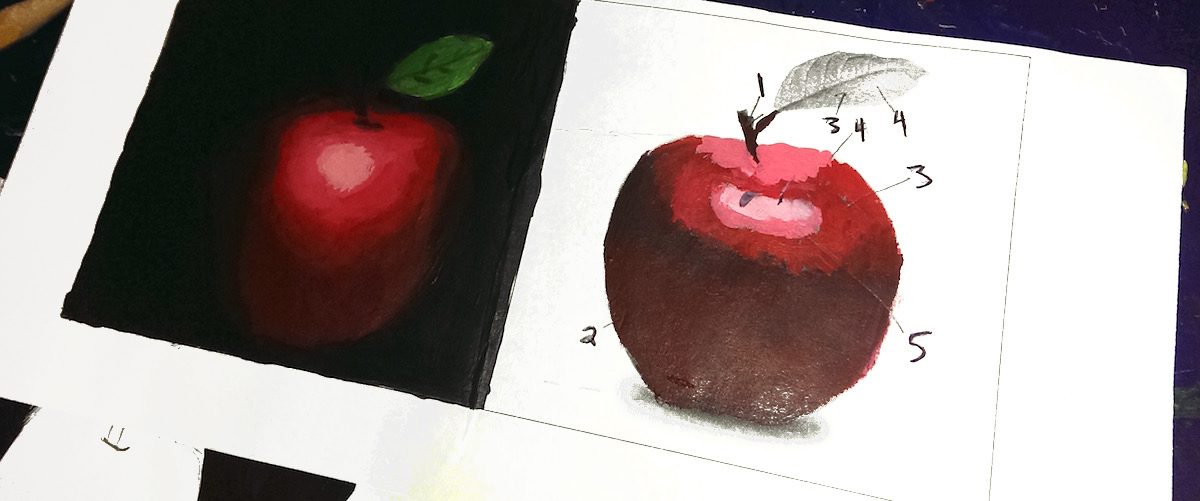For students without prior experience, painting realistically seems like an insurmountable task. Many Art I students are plagued by self-doubt, which can lead to low motivation. One way around this is to give your students a concrete way to think about painting. An idea I love to use in my classroom comes from a classic toy: The Paint by Number Kit.
No, I’m not actually advocating that you use a kit with your students. However, adapting this strategy for the classroom can work wonders. Creating a way for colors to coordinate with numbers helps students visualize, identify, and replicate values. In short, pairing colors and numbers makes technical concepts click.
Here’s how it works.
1. Choose a Subject and Have Students Identify the Values
It’s important to keep in mind this is a skill-building activity. Creativity is not the goal here. Therefore, choose a simple subject, like an apple, for all of your students to work with. Create half sheets of paper where the image is on one side and a blank space is on the other.
Have students draw a contour line drawing of the image. Then, ask them to identify the values they see using numbers. The number “1” represents the darkest values. The number “5” represents the lightest values.
Everywhere students see the darkest value, they write the number “1” on the image. Once the darkest value is identified and labeled throughout the image, have students move on the second darkest value. Students label “2” every place where they see that value. Repeat the process all the way until “5” is labeled for the lightest values.

2. Mix Tints and Shades
Begin by having your students mix a dark value, which we’ll call “black,” from the primary colors on one side of their palette. Then, have them place white on the other side. In the middle, have them place a color.
Using their “black” and their chosen color, students will mix two shades. Using their “white” and their chosen color, students will mix two tints. Doing so, they’ll create the five values they’ll need to use in their painting.

3. Paint the Tints and Shades
In my room, I teach students to paint the darkest values first and work toward the lightest values. This is why students labeled the darkest values with a number “1” in the first step. Because this is a skill building exercise, you might want to create a slideshow to show the step you’re on. This can be incredibly helpful for students who need extra visual support in learning.
Students apply their darkest value where it needs to go. Then, they switch to their second darkest value and continue to fill in their drawing until it’s finished.

Supporting Your Students
Don’t Underestimate the Power of the Slideshow
As I mentioned, having some sort of visual students can follow along step-by-step can really help solidify these directions. Students often get confused and frustrated when they are first learning how to paint, so additional visual support is always helpful.
Be Sure to Allow for Differences
Although you are working to build skills together, remember each student will have their own individual interpretation of where to place their different values. Make sure to stress students can make their own artistic choices. If some students need to copy the slideshow exactly to get the hang of painting, so be it. That’s what scaffolding is all about. However, other students will use your suggestions as a guide and some students will just jump in with their own way of doing things. All approaches are okay.
Introducing painting to students is sometimes difficult, and Art I students can often use as much support as possible. Assigning numbers to values is a great place to start. Adding the support of a slideshow helps even the most reluctant learners feel confident to try. Remember the slideshow can guide them or help make the concepts make sense, but allow students to have the complete artistic license to interpret the image they are painting however they see fit.
How do you introduce painting with students?
What successes or struggles have you found with painting using numbers methods?
Magazine articles and podcasts are opinions of professional education contributors and do not necessarily represent the position of the Art of Education University (AOEU) or its academic offerings. Contributors use terms in the way they are most often talked about in the scope of their educational experiences.





